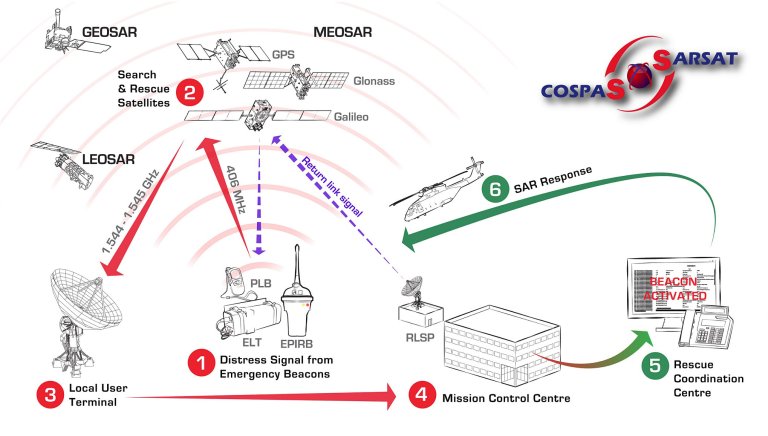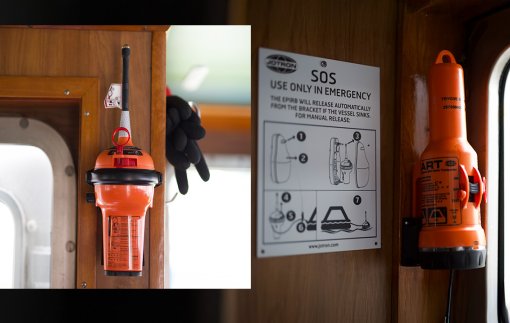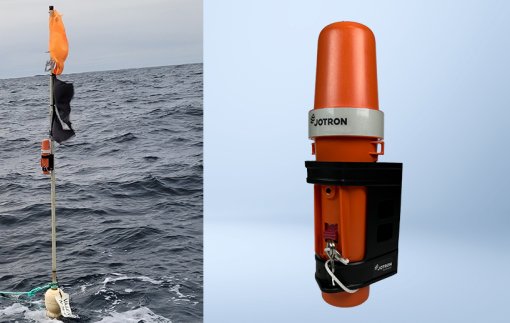PLB ensuring outdoors safety
A personal locator beacon ensures safety without mobile coverage
When we venture into nature, whether it is on a mountain hike, sailing trip, hunting expedition, or an adventure - we often bring equipment to ensure our safety and preparedness for unforeseen circumstances. But what happens if the worst occurs and you are far from mobile telephone coverage? In such situations, a personal locator beacon (PLB) can make all the difference between life and death.

What is a personal locator beacon?
A PLB is a small electronic device designed to send emergency distress signals to satellites, which then relay the signal to rescue services worldwide. Most PLBs are equipped with GPS technology, allowing them to transmit precise location data, and they operate on specific frequencies used globally for emergency communication, such as the 406 MHz frequency.
PLBs are commonly used by hikers, climbers, paddlers, and other outdoor enthusiasts who venture into areas often without mobile coverage. They are also popular among pilots, sailors, and commercial fishermen. When activated, a PLB sends an emergency signal with GPS coordinates, enabling rescue teams to locate the person quickly and accurately.
How a PLB works
This safety device sends a signal via the Cospas-Sarsat satellite system, a global network of satellites that monitors the Earth's surface for distress signals. When a PLB is activated, the signal is first sent to a satellite, which then relays it to the nearest rescue coordination center. This center can accurately locate the distress beacon using the signal's GPS coordinates.
The Cospas-Sarsat system has been in operation since 1982, and thanks to this system, thousands of lives have been saved. While older models of distress beacons had limited range and precision, modern PLBs are equipped with GPS, making the location extremely accurate - often within just a few meters. Additionally, PLBs transmit a secondary signal on 121.5 MHz, which can be used by rescue teams on the ground to get even more precise positioning as they approach the person in need of help.

The difference between a PLB and an EPIRB
Although both PLBs and Emergency Position-Indicating Radio Beacons (EPIRBs) are used to send distress signals, they are designed for different purposes. EPIRBs are primarily intended for maritime use and are often mandatory on larger boats and ships. These devices are larger and more robust, and they are often activated automatically when they come into contact with water.
On the other hand, PLBs are smaller, more portable, and require manual activation. They are specifically designed for personal use and for people who are traveling on land. Both devices use the Cospas-Sarsat system and can transmit precise GPS coordinates, but PLBs are made for individuals who need to carry them during outdoor activities and trips in land-based areas.
When should you consider bringing a PLB?
Although not everyone needs a PLB, there are certain situations where having one can be invaluable. People planning to travel far into nature or to areas without mobile coverage should consider carrying this safety device. Examples include trips to remote mountain ranges, wilderness areas, dense forests, or maritime regions beyond mobile service.
For those who often travel alone or engage in high-risk activities, a PLB can provide extra peace of mind. It offers both hikers and their loved ones reassurance that help can be summoned in a critical situation, regardless of mobile network coverage.
Acquisition and use of PLBs in Norway
In Norway, an increasing number of people are recognizing the value of a PLB. These devices can be purchased from various outdoor and boating retailers, and they require registration with the authorities. In Norway, the Norwegian Communications Authority (Nasjonal kommunikasjonsmyndighet) is responsible for assigning a unique identification number to each PLB. This registration ensures that rescue services have access to owner information, which can be crucial during a rescue operation.
Prices vary, but a PLB typically costs between 3,000 and 5,000 NOK, depending on the functionality and model. While the cost may seem high, many consider it an investment in safety. A PLB also requires regular maintenance and battery replacement to ensure it functions optimally when needed.
A personal locator beacon can be a lifesaver in situations where you are cut off from other forms of communication and need immediate assistance. The technology behind these small devices is reliable and well-developed, providing peace of mind to outdoor enthusiasts, sailors, pilots, and others who venture far from civilization. Once you invest in a PLB, you are not only investing in your own safety but also in the assurance that you can always call for help - no matter how remote your location may be.



